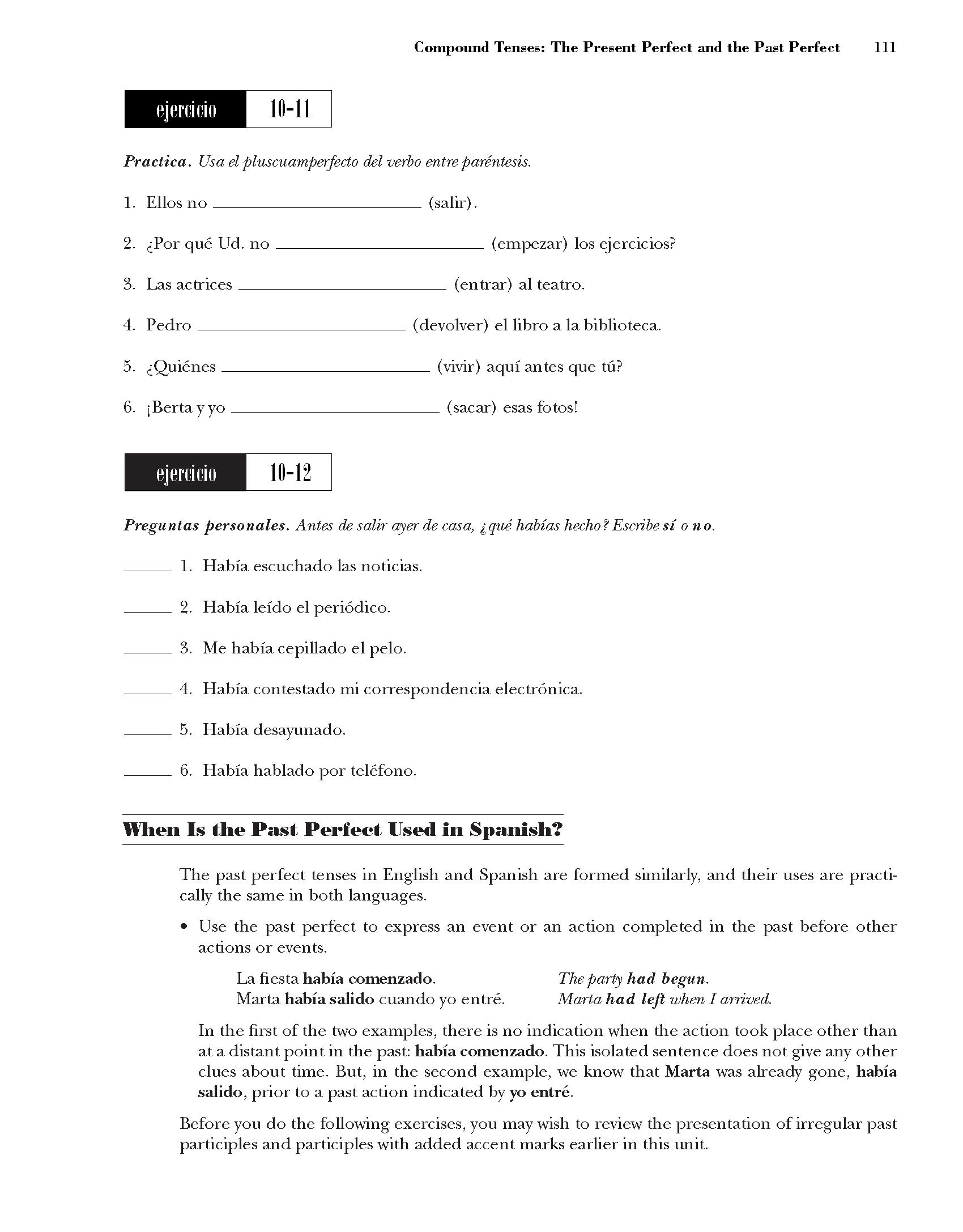CSG122

Compound Tenses: The Present Perfect and the Past Perfect
111
Practica. Usa el pluscuamperfecto del verbo entre parentesis.
1. Ellos no_ (salir).
2. ^Por que Ud. no_ (empezar) los ejercicios?
3. Las actrices
4. Pedro_
5. ^Quienes _
6. j Berta yyo
_ (entrar) al teatro.
(devolver) el libro a la biblioteca.
_ (vivir) aqui antes que tu?
_ (sacar) esas fotos!
Preguntas personales. Antes de salir ayer de casa, i que habias hecho ? Escńbe si ono.
_ 1. Habia escuchado las noticias.
_ 2. Habia leido el periódico.
_ 3. Me habia cepillado el pelo.
_ 4. Habia contestado mi correspondencia electrónica.
_ 5. Habia desayunado.
_ 6. Habia hablado por telefono.
Wlien Is the Past Perfect Psed in Spanish?
The past perfect tenses in English and Spanish are formed similarly, and their uses are practi-cally the same in both languages.
• Use the past perfect to express an event or an action completed in the past before other actions or events.
La fiesta habia comenzado. The party had hegun.
Marta habia salido cuando yo entre. Marta had left when I arrwed.
In the first of the two examples, there is no indication when the action took place other than at a distant point in the past: habia comenzado. This isolated sentence does not give any other clues about time. But, in the second example, we know that Marta was already gone, habia salido, prior to a past action indicated by yo entre.
Before you do the following exercises, you may wish to review the presentation of irregular past participles and participles with added accent marks earlier in this unit.
Wyszukiwarka
Podobne podstrony:
CSG120 Compound Tenses: The Present Perfect and the Past Perfect 109Wlieii Is the Present Perfect Te
CSG116 Compound Tenses: The Present Perfect and the Past Perfect 105 yo he nosotros/n oso
CSG118 107 Compound Tenses: The Present Perfect and the Past Perfect • Irregular past participles in
CSG124 Compound Tenses: The Present Perfect and the Past Perfect 113 10-16ejercicio Sorpresas en una
CSG132 121 Compound Tenses: The Futurę Perfect and the Conditional Perfect 6. Habr
CSG134 123 Compound Tenses: The Futurę Perfect and the Conditional PerfectOne Morę Use of the Condit
CSG128 Compound Tenses: The Futurę Perfect and the Conditional Perfect 117 11-3 ejercicio La duda. E
więcej podobnych podstron